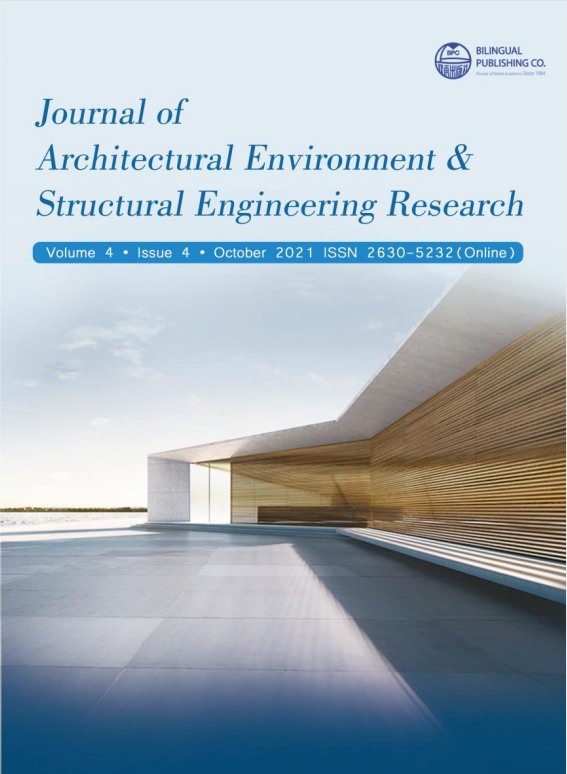-
371
-
208
-
183
-
179
-
168
Impact of Compaction Mode on Strength Properties of Sustainable Asphalt Concrete
DOI:
https://doi.org/10.30564/jaeser.v4i4.3598Abstract
Various modes of compacting the asphalt concrete mixture can createmechanically different behaviour of the prepared specimens and can alterits sustainability. An attempt has been made in the present assessment toprepare asphalt concrete specimens by implementation of three modesof compaction, the gyratory, the roller, and the Marshall hammer. Thespecimens were prepared at the target bulk density of Marshall methodat optimum asphalt content. Extra specimens were prepared at 0.5 %asphalt below and above the optimum. Core specimens have been obtainedfrom the roller compacted slab samples. The specimens were tested forthe Marshall stiffness, tensile, and shear strength. It was observed that atoptimum asphalt content, the indirect tensile strength declines by (18.8and 70.5) % for gyratory and roller compacted specimens respectively ascompared with hammer compacted specimens. At optimum asphalt content,the shear strength declines by (70.5 and 82.2) % while Marshall stiffnessdeclines by (10.2 and 44.8) % for hammer and roller compacted specimensas compared with that of gyratory compacted specimen. Specimensprepared by gyratory compaction are less susceptible to the change inthe testing temperature as compared with other modes of compaction. Itis recommended to consider the mode of compaction to suit the requireddesign property of sustainable asphalt concrete mixture.Keywords:
Sustainable Asphalt concrete; Compaction mode; Tensile; Shear strength; Marshall StiffnessReferences
[1] Hartmán, A.; Gilchrist, M.; Walsh, G. (2001). Effect of mixture compaction on indirect tensile stiffness and fatigue. J. Transp. Eng. 127, 370-378.
[2] Vacková P., Valentin J., Kotoušová A. (2018). Impact of lowered laboratory compaction rate on strength properties of asphalt mixtures. Innovative Infrastructure Solution ;3: P.1-8. DOI:https://doi.org/10.1007/s41062-017-0111-6
[3] Huang L., Lin D., Luo H., Lin P. (2012). Effect of field compaction mode on asphalt mixture concrete with basic oxygen furnace slag. Construction and Building Materials. Volume 34, September. P. 16- 27, Elsevier. DOI:https://doi.org/10.1016/j.conbuildmat.2012.02.008.
[4] Xing, C.; Xu, H.; Tan, Y.; Liu, X.; Ye, Q. (2019). Mesostructured property of aggregate disruption in asphalt mixture based on digital image processing method. Constr. Build. Mater. 200, P. 781-789. DOI:https://doi.org/10.1016/j.conbuildmat.2018.12.133.
[5] Airey G., Collop A. (2014). Mechanical and structural assessment of laboratory and field-compacted asphalt mixtures. Int. J. Pavement Eng. 17: P. 50-63. DOI:http://dx.doi.org/10.1080/10298436.2014.925551
[6] Marcobal J., Lizárraga J., and Gallego J. (2019). Laboratory compaction study and mechanical performance assessment of half-warm mix recycled asphalt mixtures Containing 100% RAP. Materials. 12, MDPI, 1992. DOI: https://doi.org/10.3390/ma12121992.
[7] Tarefder, R.A.; Ahmad, M. (2016). Effect of compaction procedure on air void structure of asphalt concrete Measurement, 90, P. 151-157. DOI:https://doi.org/10.1016/j.measurement.2016.04.054.
[8] Woszuk A., Franus W. (2016). Properties of the Warm Mix Asphalt involving clinoptilolite and Na-P1 zeolite additives. Constr. Build. Mater. 114: P. 556-563. DOI:https://doi.org/10.1016/j.conbuildmat.2016.03.188.
[9] Radzi H., Muniandy R., Hassim S., Lawand T., Jakarni F. (2019). An overview of asphalt mix designs using various compactors. IOP Conf. Ser.: Mater. Sci. Eng. 512 012031. DOI:https://doi.org/10.1088/1757-899X/512/1/012031.
[10] Pérez-Jiménez F, Martínez A, Miró R, Hernández-Barrera D and Araya-Zamorano L. (2014). Effect of compaction temperature and procedure on the design of asphalt mixtures using Marshall and gyratory compactors Construction and Building Materials 65 264-9.
[11] Cheung L.W., Dawson A.R. (2002). Effects of Particle and Mix Characteristics on Performance of Some Granular Materials. Transp. Res. Rec. J. Transp. Res. Board. 1787: P. 90-98. DOI:https://doi.org/10.3141/1787-10.
[12] Wróbel M., Woszuk A., and Franus W. (2020). Laboratory Methods for Assessing the Influence of Improper Asphalt Mix Compaction on Its Performance. Materials (Basel). MDPI. Jun; 13(11): 2476. DOI:https://doi.org/10.3390/ma13112476.
[13] ASTM, American Society for Testing and Materials, ASTM: (2016). Road and Paving Material, VehiclePavement System, Annual Book of ASTM Standards, Vol. 04.03. Https://www.astm.org.
[14] SCRB. (2003). State Commission of Roads and Bridges. Standard Specification for Roads & Bridges, Ministry of Housing & Construction, Iraq.
[15] Sarsam, S.I.; Al-Obaidi, M.K. (2014). Assessing the Impact of Various Modes of Compaction on Tensile Property and Temperature Susceptibility of Asphalt Concrete. Int. J. Sci. Res. Knowledge. 2, P. 297-305.
[16] Sarsam S. and Al-Obaidi M. (2014). Modeling the Impact of Various Modes of Compaction on Shear Property of Asphalt Concrete. Research Journal of modeling and simulation, (RJMS) Vol.1 No. (4), pp. 56-64, Sciknow publication Ltd. USA.
[17] EN. EN 12697 - 33, (2007). Bituminous Mixtures - Test Methods for Hot Mix Asphalt - part 33: Specimen prepared by Roller Compactor, European Committee for Standardization.
[18] Sarsam S. and Khalid M. (2016). Influence of compaction method on asphalt concrete quality. Lambert academic publishing, ISBN: 978-3-330-02415-1.
[19] Jimenez, R. A. (1974). Testing for Debonding of Asphalt from Aggregates, Transportation Research Record 515, TRB, National Research Council, Washington, D.C., P. 1-17.
[20] Al-ammari M., Jakarni F., Muniandy R., and Hassim S. (2019). The effect of aggregate and compaction method on the physical properties of hot mix asphalt. IOP Conf. Ser.: Mater. Sci. Eng. 512 012003 https://www.researchgate.net/publication/332622467.
Downloads
How to Cite
Issue
Article Type
License
Copyright © 2021 saad Issa sarsam

This is an open access article under the Creative Commons Attribution-NonCommercial 4.0 International (CC BY-NC 4.0) License.




 saad Issa sarsam
saad Issa sarsam





